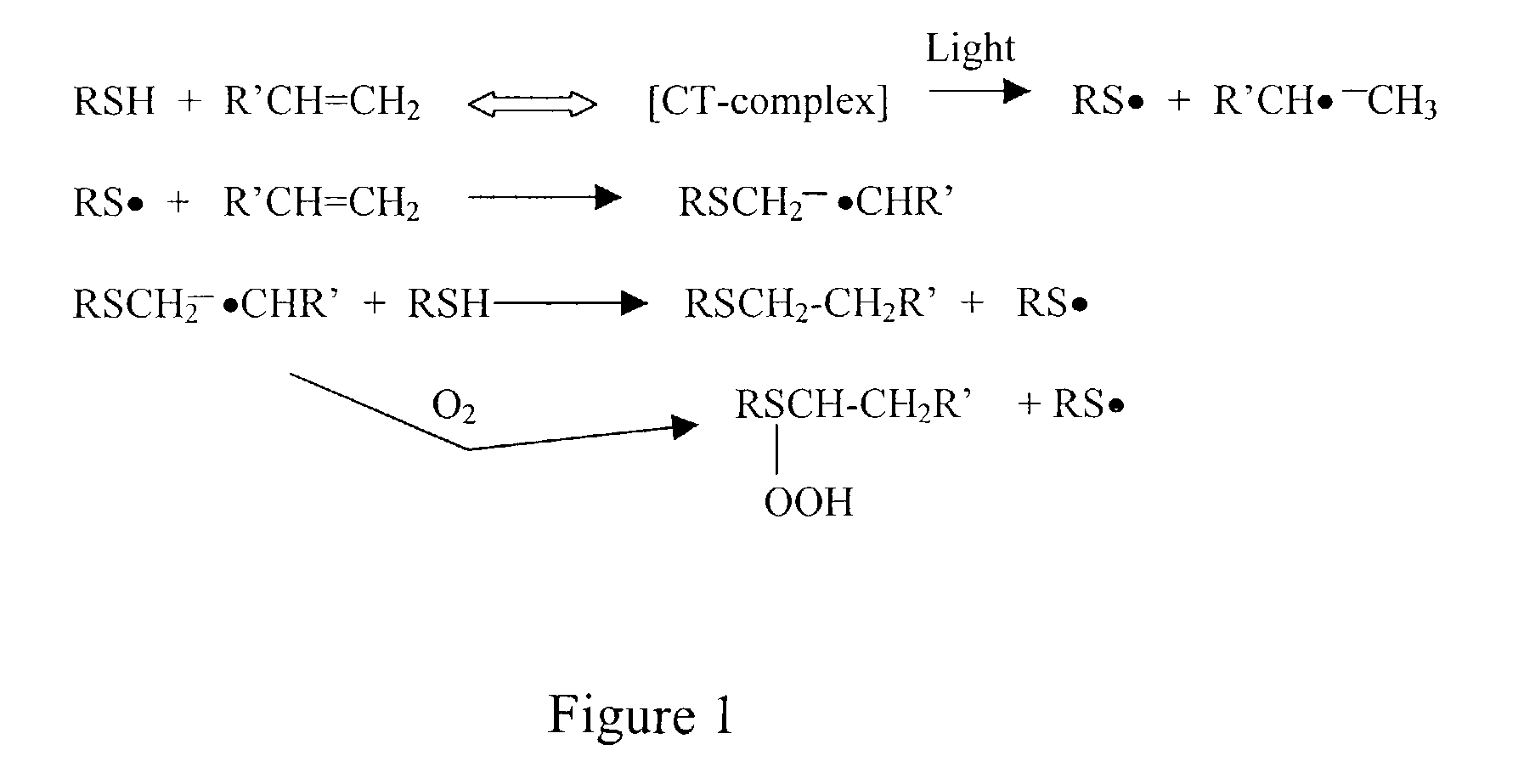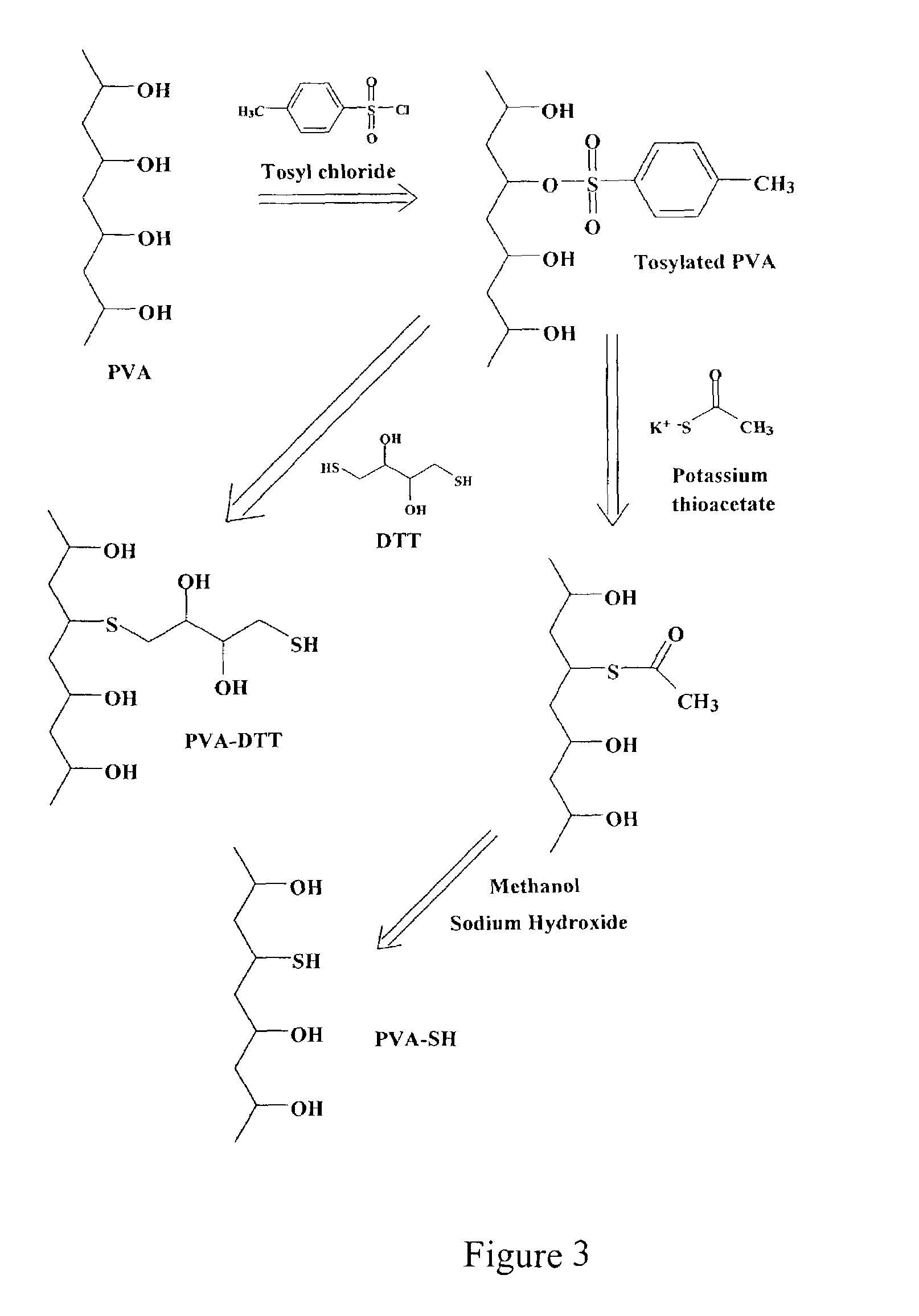Degradable thiol-ene polymers
a technology of thiol-ene polymer and thiol-ene, which is applied in the preparation of sugar derivatives, liquid fertilisers, prosthesis, etc., can solve the problems of a limited range of physical properties, a lack of suitable scaffold materials with systematically variable properties, and the unlikely that the field will achieve its full potential
- Summary
- Abstract
- Description
- Claims
- Application Information
AI Technical Summary
Problems solved by technology
Method used
Image
Examples
example 1
[0039]This example shows two possible derivatizations of poly(vinyl alcohol).
[0040]Synthesis of a thiol macromer can proceed via several approaches, two of which are presented in the scheme shown in FIG. 3. Both progress via a tosylate intermediate. Poly(vinyl alcohol) was tosylated in anhydrous pyridine at 85° C. overnight. The insoluble PVA was pulled into solution as the reaction proceeded. This tosylated PVA was then be reacted with dithiothreitol (DTT), in one instance, and potassium thioacetate, in another instance, at room temperature. Nucleophilic attack of the thiolate anion displaced the tosyl group, covalently linking these molecules to the PVA backbone through a thioether bond. PVA-thioacetate was hydrolyzed via simple methanolysis, yielding the thiol macromer (PVA-SH) in which the thiol groups have replaced some of the hydroxyl groups. Using an excess of DTT in the other mechanism guarantees that there will be free thiol groups in the resulting molecule (PVA-DTT).
[0041]...
example 2
[0042]This example demonstrates the feasibility of synthesizing PLA multi-ene and PLA multithiol monomers for use in the present invention.
[0043]A major advantage of thiol-ene hydrogels is the ability to use a wide range of precursor molecules with varying structures and chemistries. In particular, the technique affords the possibility of having largely poly(lactic acid) polymers in which the degradation rate is controlled by the PLA segment molecular weight. To obtain this control, it is necessary to synthesize PLA multi-enes and PLA multithiols. FIG. 4 shows the scheme for the synthesis of PLA trithiol and PLA triacrylate.
[0044]Lactic acid oligomers with three branches were prepared with glycerol used as an initiator to polymerize the lactide using stannous octoate as the catalyst. Oligomers with different chain lengths were obtained by adjusting the initiator / lactide ratio. This oligomer was used to derivatize the hydroxyl end groups of the three branches either with acrylates or...
PUM
| Property | Measurement | Unit |
|---|---|---|
| Length | aaaaa | aaaaa |
| Biocompatibility | aaaaa | aaaaa |
Abstract
Description
Claims
Application Information
 Login to View More
Login to View More - R&D
- Intellectual Property
- Life Sciences
- Materials
- Tech Scout
- Unparalleled Data Quality
- Higher Quality Content
- 60% Fewer Hallucinations
Browse by: Latest US Patents, China's latest patents, Technical Efficacy Thesaurus, Application Domain, Technology Topic, Popular Technical Reports.
© 2025 PatSnap. All rights reserved.Legal|Privacy policy|Modern Slavery Act Transparency Statement|Sitemap|About US| Contact US: help@patsnap.com



